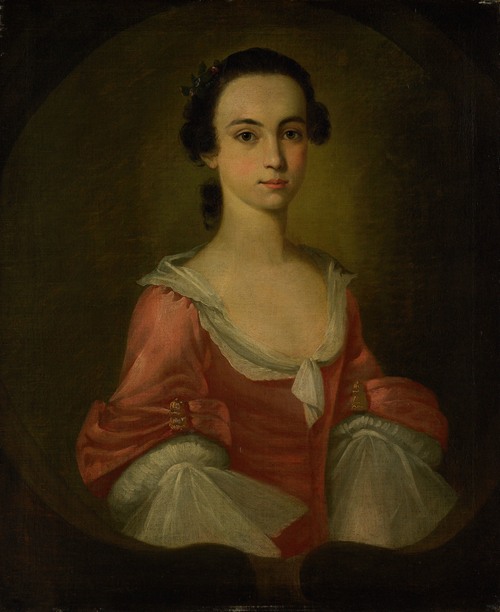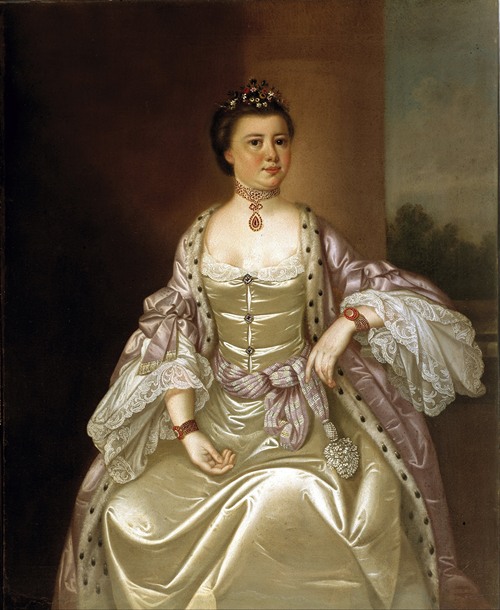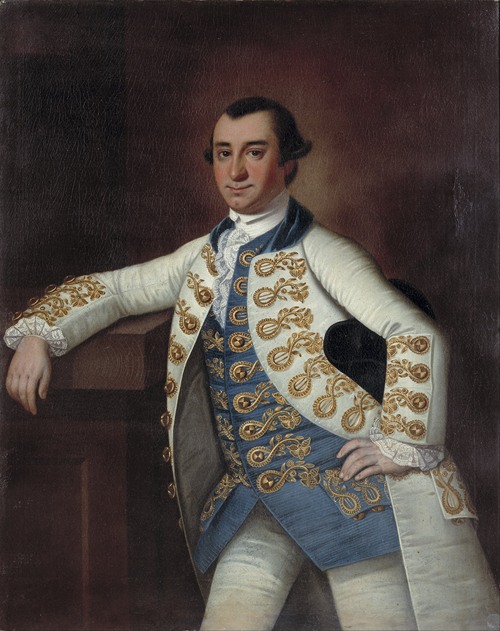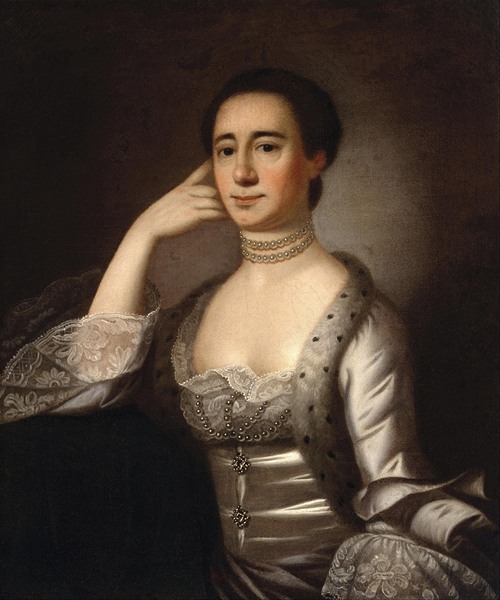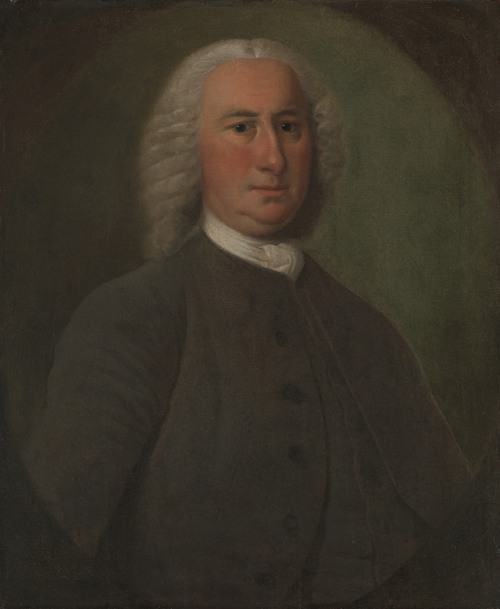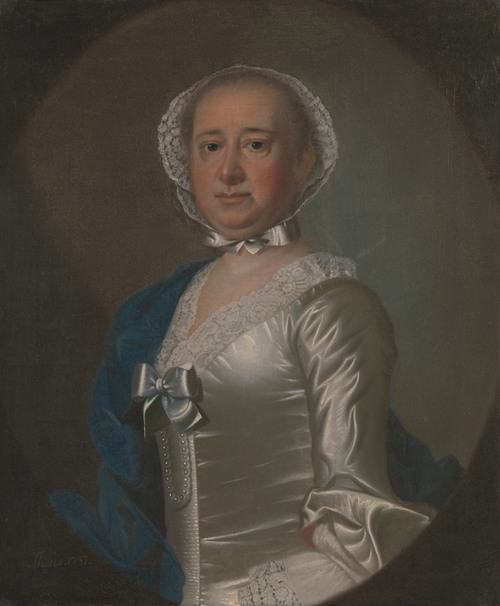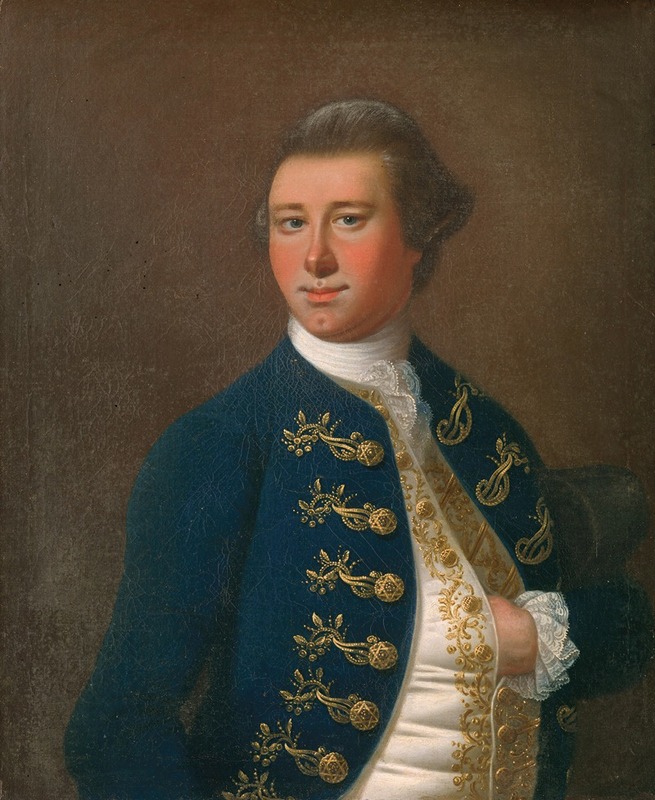
Jeremiah Theus (sometimes Jeremiah Theüs) was a Swiss-born American painter, primarily of portraits. He was active mainly around Charleston, South Carolina, in which city he remained almost without competition for the bulk of his career.
Theus was born in the city of Chur, in the Swiss canton of Graubünden, and was the eldest child of Simeon and Anna Walser Theüs. He was nineteen when he immigrated with his family to the Province of South Carolina, whose General Assembly had provided land grants and transport funds to encourage European Protestants to settle in the colony. Simeon Theüs was given 250 acres (1.0 km2) of land along the Edisto River in what was then Orangeburgh Township, today Orangeburg County.
He established his studio in a central location, the northeast corner of Broad and Meeting Streets. Just what degree of training he received is unknown; given that opportunities to study art were limited in Charleston at the time, however, it seems likely that he had received some training while he was still in Switzerland. Theus was twenty-eight in 1744, yet he already felt confident enough in his abilities to open an evening drawing school in his home.
Theus took on a variety of commissions during his early career, including painting and guilding the steeple of St. Michael's Episcopal Church in 1756, a job for which the congregation's commissioners paid him 77 pounds and 10 shillings for his labor and supplies. He also painted the weather vane, and contributed 50 pounds towards the building fund for a new structure; he later owned a pew in the church.
Theus was able to build a highly successful practice for himself in the three decades he spent in Charleston; this was due largely to the fact that for much of that time he was the only painter in town with any significant reputation. Perhaps his greatest competition came from English-born and -trained John Wollaston, who visited the city in 1765 and remained for about two years before returning to England. It seems likely that the latter painter influenced Theus to some extent; among the decorative touches he preferred for his work were dresses trimmed with ermine, for his female sitters, and a marble tabletop, both of which began appearing in portraits by Theus at about the time Wollaston was in Charleston. The very end of his career also saw the rise to popularity of Philadelphia-born Henry Benbridge, who had received training in Italy and had migrated to South Carolina not long after his return home; he would soon replace Theus as the most popular painter in the city.
Theus died in Charleston in 1774; his death was noted in at least three local papers, including The South-Carolina and American General Gazette and the South Carolina Gazette, both of which referred to him in their obituary notices as both "ingenious" and "honest". His will is dated September 15, 1770, with a codicil added on March 14, 1774, and directs that his paintings, prints, paints, and books should be sold to provide support for his family. At the estate sale, one Edward Oats purchased ""a great many PORTRAITS of Men, Women, and Children" with the intent of finding interested buyers for the set; whether or not he was able to sell the paintings off is unknown. The will reveals how successful Theus was in his chosen profession; besides holding nearly 3,000 pounds in cash, he owned a house in Charleston, 200 acres (0.81 km2) of land in Orangeburgh Township, a town lot in Orangeburgh, and seven slaves. He had also, before his death, given 2,100 pounds to the children of his first marriage.
Theus married twice during his time in Charleston. His first wife, whom he wed on January 13, 1741, was Cathrina Elizabeth Shaumlöffel, daughter of one John Shaumlöffel of Orangeburgh Township; she was just 17 at the time of the wedding. The couple would go on to have five children together. Cathrina died in 1754 while giving birth to the sixth, who died at birth. In the following year, Theus married again, this time to a widow named Eva Rosanna Hilt. The wedding likely took place around September, because in that month the artist purchased a brick house at the corner of Mazyck (today Logan) and Broad Streets in Charleston. Theus and his second wife would have four children.

